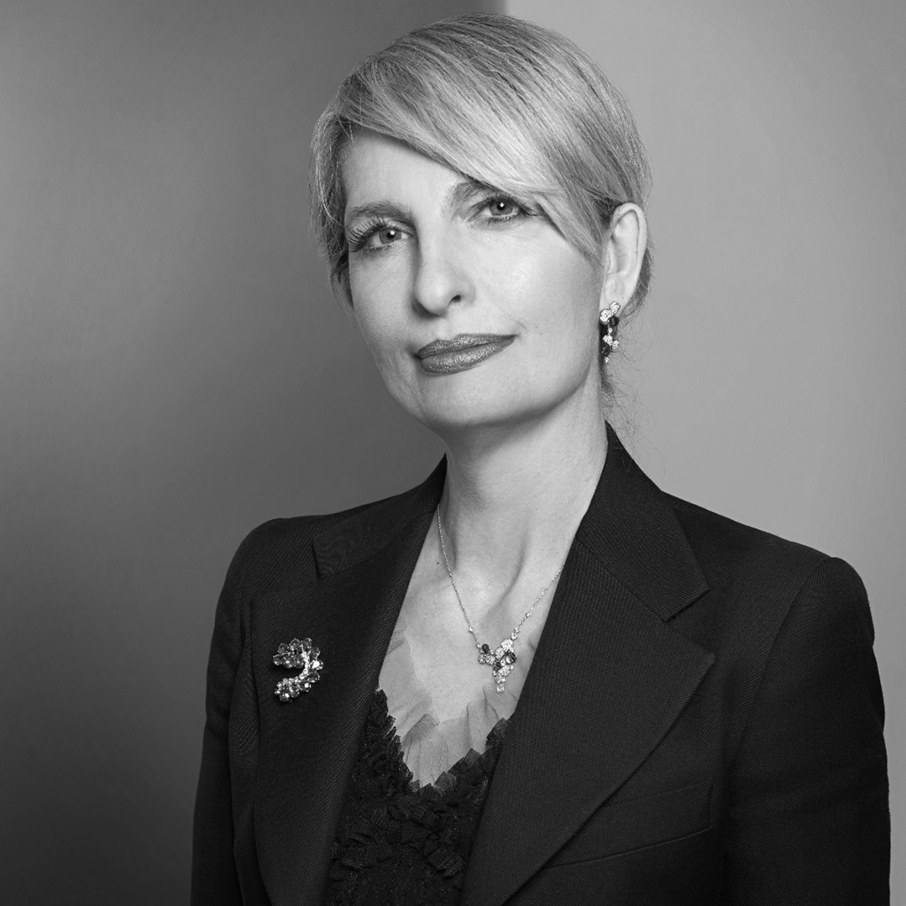Katia Bassi
101 Great Minds on Music Brands and Behavior
Katia Bassi, Chief Marketing & Communication Officer, Lamborghini
Katia Bassi is the Chief Marketing and Communication Officer of Lamborghini. In this role, she is responsible globally for the strategic direction of brand, marketing, partnerships, sponsorship & co-branding. She’s the first woman ever to join the Lamborghini board. Katia graduated in Political Science and Law and holds a Master’s from Columbia University. Before joining Lamborghini, she was Vice President of Aston Martin Lagonda and Managing Director of AM Brands, Licensing Manager at Ferrari, Commercial Director of FC Internazionale as well as Country Director – Italy for the NBA.
“I believe that music is very much connected to a brand that is close to your heart, and the experiences you had with the brand.”
— KATIA BASSI, CHIEF MARKETING & COMMUNICATION OFFICER, LAMBORGHINI
Uli Reese: Can you talk about your role at Lamborghini?
Katia Bassi: I`m the Chief Marketing and Communication Officer since a couple of years. I have the privilege to be the first woman ever to be on the Board of Directors, not only for Lamborghini, but for the whole Group. I think that the brand has been very brave to take this step, but it`s also a great opportunity to be able to listen to another point of view, because in the mainly male dominated automotive business, it`s very easy not to listen and to be driven more by products than by communication and marketing. Most of the people don`t consider it a science, but I definitely consider it as one nowadays.
Reese: When you think about music, as well as sound, voice, product sounds and so on, how important will their role be in branding?
Bassi: Lamborghini`s focus lies on the sound of the engine. The engine shouldn`t be only a noise for the customer, but a real sound. To be able to expand this concept of sound to the whole company is also very important. In particular in the digital age, because everything we do is spread and shared within a few seconds. Images are the key but I`m pretty sure that in the near future, also music is becoming more important as a digital platform. It`s already important per se, as something that also creates a momentum with closed eyes. In fact, from the trend that I can see, everything transforms from screens to screenless.
“I believe that music is very much connected to a brand that is close to your heart, and the experiences you had with the brand.”
Therefore, this topic will become more and more crucial for brands.
Reese: In a screenless ecosystem, where visuals don`t make sense at all, how can I be found by my customers? How important will a sonic identity be in this case?
Bassi: It`s part of the evolution of the brand. It`s part of the evolution of the marketing strategy at the end of the day. When we started many years ago, we didn`t even think about social platforms for example. The video side was always very important, as TV was the most important medium back then. That`s completely different now and we as brands have to be like chameleons. We don`t forget about the things that happened in the past, but we have to react to the new needs of consumers. The sound system in the car is probably becoming the next digital platform of the future. Even if I don`t see the images, I can always listen to the content. When we talk about automotive brands like us, where emotions are key, every sound will immediately be linked to good vibes and a great experience with your car. As music is able to transport those experiences, it`s important for brands to approach this topic not in a light-headed way. You need to build the sonic path in the same strategic way as the visual one. Just like the brand pillars, the brand image, the objectives, and so on.
Reese: In the first edition of this book, everyone agreed that 50% of the value in audio-visual communication is found in audio. But the budget of audio is maybe about 5%.
Bassi: I agree. But I have to say something about images and video. In the last 3-4 years, we started to consider music as an important element in communication. Videos were always trying to communicate who the brand is in terms of images, through some personas, through some elements that are close to the brand. Visual elements in videos are easier to identify as the music. Music is very much personal. The most important thing for me is that the car is perceived in the best possible way. The concept of cheap but good is a thing of the past. You have already spent so much money on the visuals that music has always been in the last place, because the focus was obviously only on the visuals.
Reese: But why is it that way? What is the reason for this decision?
Bassi: Probably because I personally consider the first thing that should be conveyed to the customer is what the brand stands for. This can be done in the easiest and most understandable way through images. After that, it`s normal to think about music as one of the following parts. Music is auxiliary in this process, but we always have to talk about the brand first.
Reese: Brands act like teenagers. They constantly change because they don`t know who they are.
Bassi: Exactly. You see many brands are doing that. They diversify the message based on the product and not on the brand. The automotive industry is very traditional, they focus on the product, not on the brand. If you see the videos, you see beautiful landscapes, auxiliary music and it`s all very traditional. The communication of all the brands is basically the same. The segment is innovative, but from a marketing point of view, there is nothing innovative going on. That´s why we are making use of data in order to give the best possible experience to our customers. We have many events every year where we go to, to show our customers that we care about them. Marketing is not only visuals. It`s the connection you want to establish and strengthen between the brand and the customers. Music is a part of that, and it will definitely play a bigger role within this whole process in the future.
Note: The interview took place in Sant‘Agata Bolognese, on the 11th of February 2019.
Copyright regulations apply when using material from this document and when using the supplied video or audio files. This document is intended to be exclusively viewed by the recipient and its subsidiaries. Under no circumstances may the content or part of the content made available or forwarded in any form orally or in writing to third parties, in particular to competitors or affiliates. The publication, reproduction, distribution, reproduction or other utilization of the presented ideas, texts, layouts, concepts, films or audio files without express written permission by amp GmbH.


